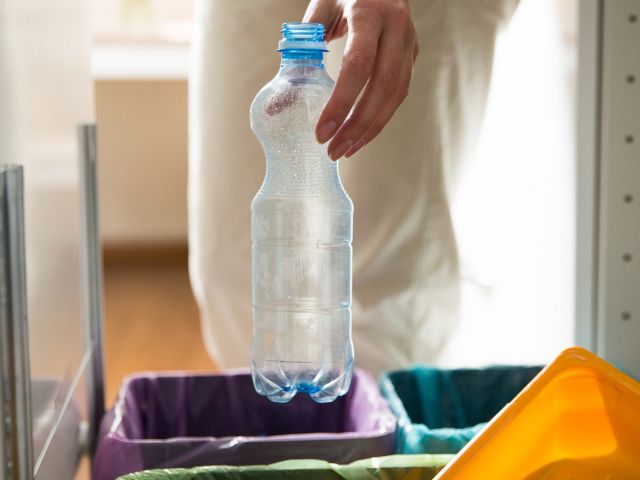Toxic chemicals in the environment harm our ability to reproduce, negatively affect pregnancies, and are associated with numerous other long-term health problems, according to The American College of Obstetricians and Gynecologists (The College) and the American Society for Reproductive Medicine (ASRM). In a joint Committee Opinion, The College and ASRM urge ob-gyns to advocate for government policy changes to identify and reduce exposure to toxic environmental agents.
“Lawmakers should require the US Environmental Protection Agency and industry to define and estimate the dangers that aggregate exposure to harmful chemicals pose to pregnant women, infants, and children and act to protect these vulnerable populations,” said Jeanne A. Conry, MD, PhD, president of The College.
“Every pregnant woman in America is exposed to many different chemicals in the environment,” said Dr. Conry. “Prenatal exposure to certain chemicals is linked to miscarriages, stillbirths, and birth defects.” Many chemicals that pregnant women absorb or ingest from the environment can cross the placenta to the fetus. Exposure to mercury during pregnancy, for instance, is known to harm cognitive development in children.
The scientific evidence over the last 15 years shows that exposure to toxic environmental agents before conception and during pregnancy can have significant and long lasting effects on reproductive health. “For example, pesticide exposure in men is associated with poor semen quality, sterility, and prostate cancer,” said Linda C. Guidice, MD, PhD, president of ASRM. “We also know that exposure to pesticides may interfere with puberty, menstruation and ovulation, fertility, and menopause in women.”
Other reproductive and health problems associated with exposure to toxic environmental agents:
• Miscarriage and stillbirth
• Impaired fetal growth and low birth weight
• Preterm birth
• Childhood cancers
• Birth defects
• Cognitive/intellectual impairment
• Thyroid problems
Approximately 700 new chemicals are introduced into the US market each year, and more than 84,000 chemical substances are being used in manufacturing and processing or are being imported. “The scary fact is that we don’t have safety data on most of these chemicals even though they are everywhere—in the air, water, soil, our food supply, and everyday products,” Dr. Conry said. “Bisphenol A (BPA), a hormone disruptor, is a common toxic chemical contained in our food, packaging, and many consumer products.”
“To successfully study the impact of these chemical exposures, we must shift the burden of proof from the individual health care provider and the consumer to the manufacturers before any chemicals are even released into the environment,” said Dr. Conry.
Certain groups of people and communities have higher exposures to harmful environmental chemicals than others. “For example, women exposed to toxic chemicals at work are at higher risk of reproductive health problems than other women,” Dr. Conry said. “Low-wage immigrants who work on farms have higher exposures to chemicals used on the crops that they harvest.”
“As reproductive health care physicians, we are in a unique position to help prevent prenatal exposure to toxic environmental agents by educating our patients about how to avoid them at home, in their community, and at work,” Dr. Guidice said.
What can physicians do?
• Learn about toxic environmental agents common in their community
• Educate patients on how to avoid toxic environmental agents
• Take environmental exposure histories during preconception and first prenatal visits
• Report identified environmental hazards to appropriate agencies
• Encourage pregnant and breastfeeding women and women in the preconception period to eat carefully washed fresh fruits and vegetables and avoid fish containing high levels of methyl-mercury (shark, swordfish, king mackerel, tilefish)
• Advance policies and practices that support a healthy food system
• Advocate for government policy changes to identify and reduce exposure to toxic environmental agents.
New developments include:
What’s happening in Congress: Over the summer, the Senate proposed a bill to reform TSCA, called the Chemical Safety Improvement Act (CSIA). This bill was sponsored by Senator Vitter (R-LA) and Senator Lautenberg (D-NJ). Unfortunately, right after the bill was announced, Senator Lautenberg passed away and the bipartisan group of Senators that backed the bill began to crumble. Since then, the Senate EPW committee held a hearing and there has been no significant movement in support or against the bill – until now. In addition, the House recently held a hearing on chemical reform– a demonstration that Congress just might have the political will to get something done on toxic chemicals this cycle.
What’s happening at the EPA: Just a short time ago EPA withdrew two draft rules it had developed under TSCA to help regulate toxins. These draft rules have been sitting with lawmakers in Washington for (collectively) almost 2,000 days and nothing has happened. Now the EPA is pulling down these draft rules and there is little hope the EPA will be able to do anything to regulate these toxins.
Companies are taking reform into their own hands: Walmart announced a new chemicals policy last week that outlines how they’re going to work with suppliers to reduce or eliminated the use of priority chemicals in consumable products in favor of greener alternatives. In addition, Procter and Gamble recently announced they’re banning phthalates and triclosan, and Johnson and Johnson announced they’re removing phthalates, formaldehyde, and parabens.
Public opinion: While Congress holds more hearings and the EPA backs down, the public still has a strong desire to do something about toxic chemicals. A poll at the end of August (conducted by Global Strategy Group) showed that there is overwhelming support (89%) for a requirement that new chemicals are determined safe before they are sold on chair shelves.








